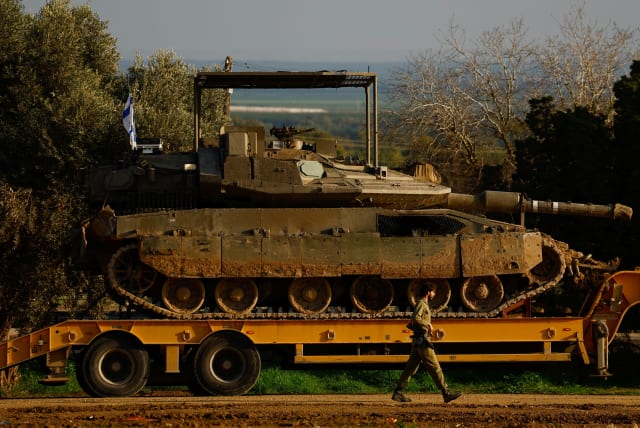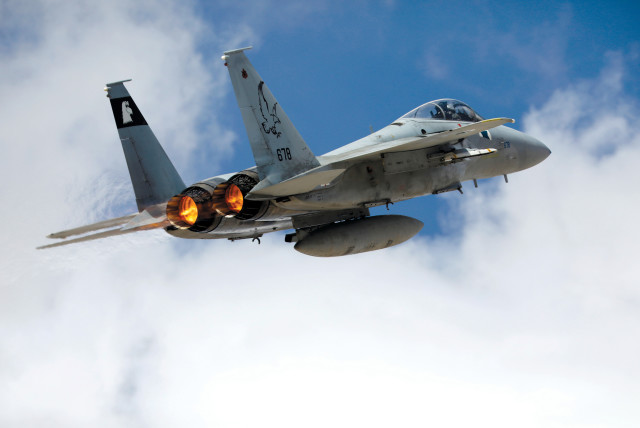Israel begins to rise in military firepower rankings after a decade of decline

This is still an overall reduction in ranking over the decade, as Israel had been in 11th place 10 years ago, during which time Iran rose rapidly despite the sanctions imposed on it.
Tel Aviv University's Insititute for National Security Studies (INSS) took to X on Thursday to lament Israel's slow slump down Global Firepower's PowerIndex (PwrIndx) which measures a nation's conventional fighting abilities.
Although this year's ranking, 17th, is a slight improvement on last year's ranking, 18th, Israel is still outpaced by several local powers and rivals.
בעקבות קיצוצים בצה"ל וחימוש מדינות שכנות, ישראל צונחת במדדי עוצמה צבאית מהמקום ה-11 אל עבר המקום ה-17 תוך עשור (על פי דירוג ה-GFP). במקביל, איראן זינקה בדירוג עוצמתה הצבאית וכיום עוקפת את ישראל וניצבת במקום ה-14, על אף הסנקציות הבינלאומיות המוטלות נגדה. יתרונותיה של ישראל באים… pic.twitter.com/yDdRiAKI3U
— INSS (@INSS_Hebrew) February 29, 2024
Israel was ranked as the fourth most powerful state in the Middle East with Turkey (8th), Iran (14th), and Egypt (15th) gaining a better ranking.
This is still an overall reduction in ranking over the decade, as Israel had been in 11th place 10 years ago, during which time Iran rose rapidly despite the sanctions imposed on it.
How is the ranking calculated?
There are over 60 different factors through which a nation is given its PwrIndx score. This score should represent the country's conventional fighting capability. The factors that determine the score range from manpower, airpower, natural resources, finances, and geography. Importantly, each of these factors encompasses a variety of sub-categories. For example, the manpower category breaks down to total population, available manpower, fit-for-service, and more.
A perfect PwrIndx score is 0.0000, however, this is "realistically unattainable" under current conditions, thus the lower the score the more conventionally powerful that country is.
The large spectrum of factors allows for a much more precise calculation of each country's Power Projection. While the Data is detailed and expansive, it does not take into consideration the soldiers' ingenuity, passion, dedication, and motivation.
The INSS characterized Israel's main advantages as "reflected in [its] technological quality and air superiority," while it characterized the advantages of the Iranian army as "the growth of the drone industry, its extensive scope, and a large armored force."
The INSS makes an extremely important point by highlighting the difference in military doctrine and spending, Israel currently outspends Iran by a factor of nearly 2.5x.
The INSS did highlight that although Israel had slumped over the decade it still remained in a much better place than most other Middle Eastern states, with Saudi Arabia at 23rd and Israel's neighbors Syria and Jordan much further down, at 60th and 80th respectively.
Lebanon was ranked 118th, below Eritrea and above South Sudan, although this likely does not reflect Hezbollah's firepower as it operates separately from the Lebanese Armed Forces.
Jerusalem Post Store
`; document.getElementById("linkPremium").innerHTML = cont; var divWithLink = document.getElementById("premium-link"); if (divWithLink !== null && divWithLink !== 'undefined') { divWithLink.style.border = "solid 1px #cb0f3e"; divWithLink.style.textAlign = "center"; divWithLink.style.marginBottom = "15px"; divWithLink.style.marginTop = "15px"; divWithLink.style.width = "100%"; divWithLink.style.backgroundColor = "#122952"; divWithLink.style.color = "#ffffff"; divWithLink.style.lineHeight = "1.5"; } } (function (v, i) { });

